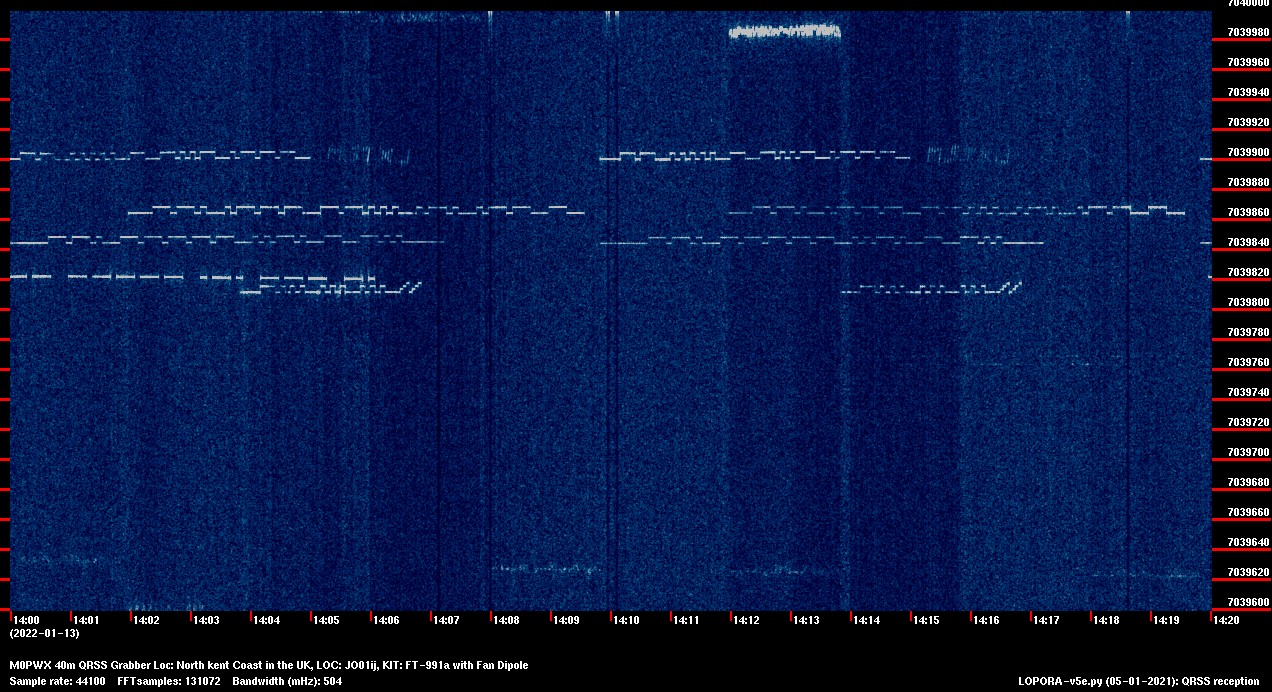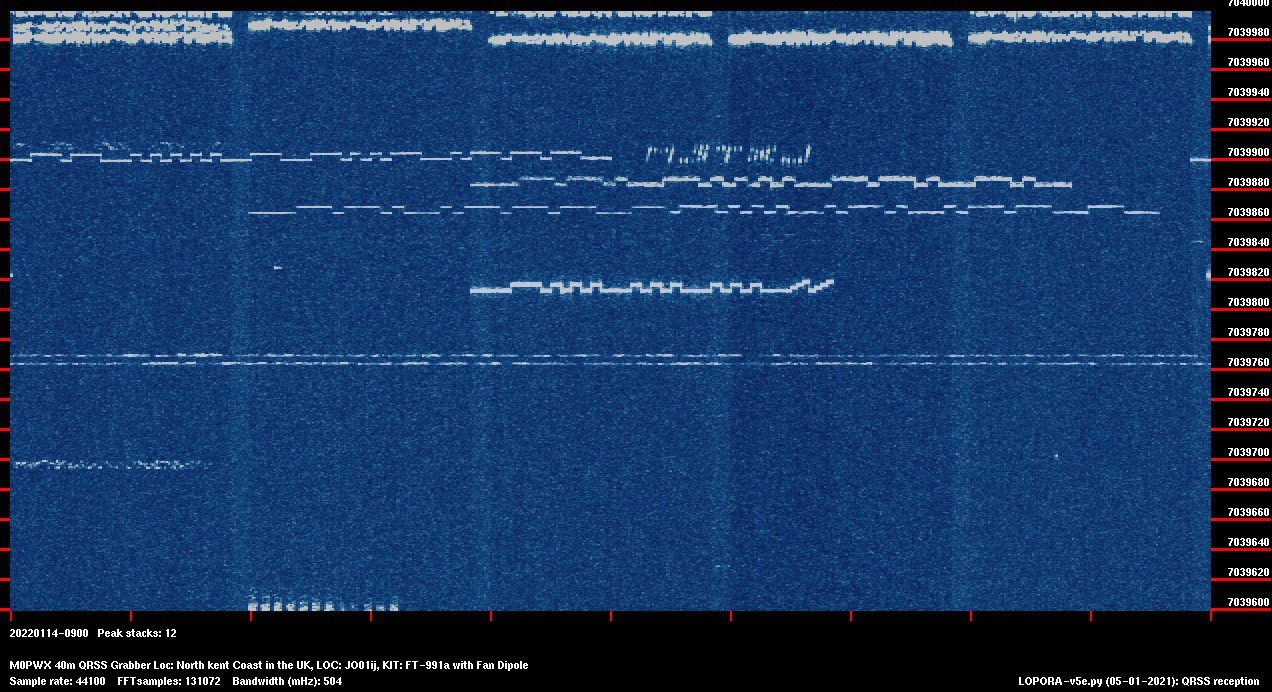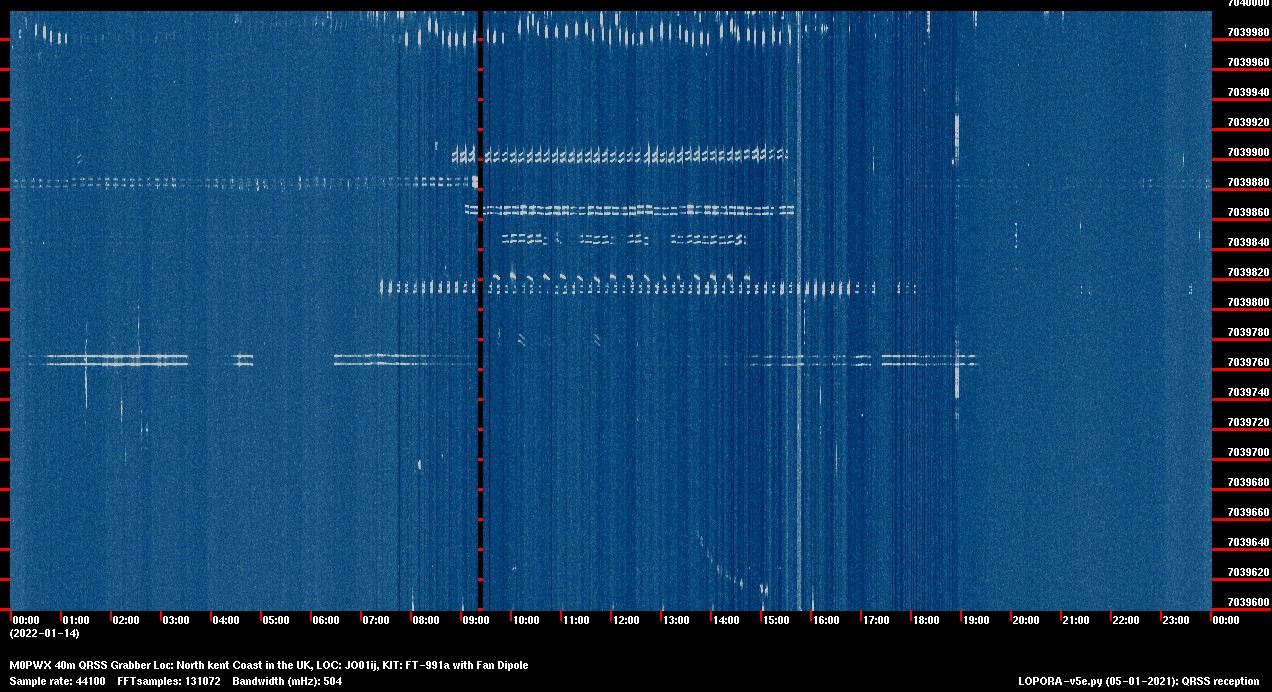Home
M0PWX's QRSS Basics Page
This Page aims to help others who are new to or Curious about this
strange mode called QRSS
So lets have a look at QRSS and its uses
Like WSPR (Weak Signal Propagation Reporter), QRSS is used to study propagation at various frequencies
It is a more fun and visual mode but needs more manual / visual analysis of the results. Unlike WSPR which has sites like WSPRNet.org that WSJT-x report into, QRSS has no real central reporting site to easilly allow you to list where you get, the closest is swarden.com which is a page with over a 100 grabber feeds from grabbers in the US, EU, iceland, going through them to find a signal is a slow and time consuming thing, there are other grabbers around the world, and people like G0FTD have a feed on there where they connect to SDR's around the world for a few hours at a time to watch for QRSS signal where there are no regular grabbers
the main mode is FSKCW, Frequency Shift CW, many also use Slow Hell to write their callsign in the waterfall and finally the fun bit, some even design graphics that are sent in a similar method to slow hell, most stations that transmit QRSS ensure the start of a frame is on a 10 minute interval, this allows frame stacking to resolve weaker signal (see examples below)
Below are a few examples of the main types of Grabs you will see on the sites and there main uses



